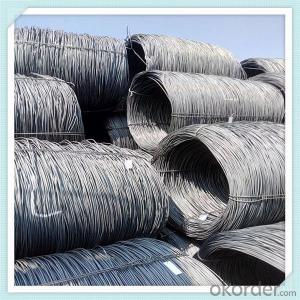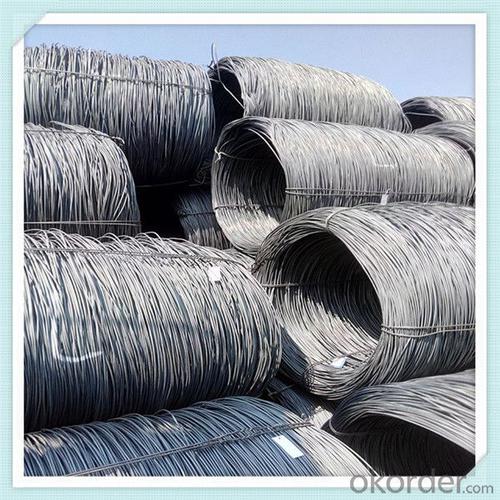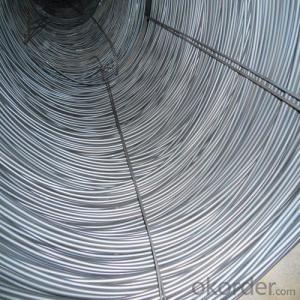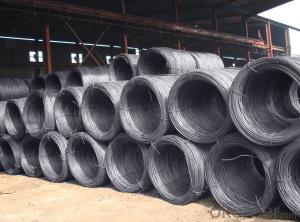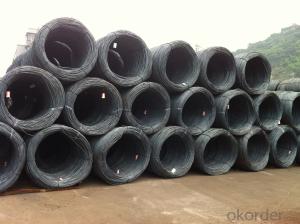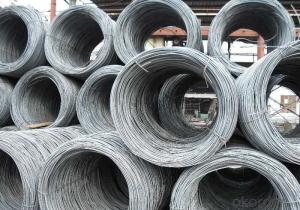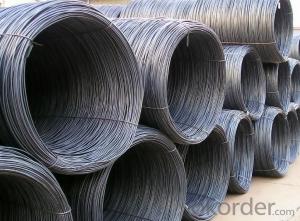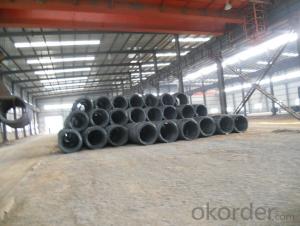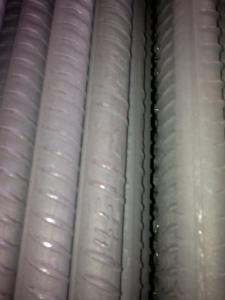Steel Wire Rod SAE1006 hot rolled low carbon
- Loading Port:
- China main port
- Payment Terms:
- TT OR LC
- Min Order Qty:
- 100 m.t.
- Supply Capability:
- 18592 m.t./month
OKorder Service Pledge
OKorder Financial Service
You Might Also Like
Specification
Produced from billets at the rolling mill, wire rod is the basis of all steel wire, rope and fencing products. The
most important characteristic in determining wire rod’s end use is its drawability. Common low carbon wire rod
is used for nails, small shaped products, barbed wires, various wire nettings, steel chains, and other applications.
High Carbon wire rod uses include steel tire cords for automobiles, conveyor belts, and pressure hoses. Other
applications include bolts, nuts, and machine parts, as well as compression, tension and torsion springs
Our Advantage:
High quality steel products from 1 class mills in
Reasonable price
Professionalism of the products
On-time delivery
Complete documents and certificates
Sincere service to meet our clients' requirements
Features
1、Pure steel quality, stable chemical contents, small tolerance.
2、Constant Quality, good drawing performance.
3、High dimension accuracy degree, accuracy degree of Level C up to 80%, smooth surface, less scale,
easy to be pickled.
4、Automatic bundling with 4 lines by Machine in tidy and good looks
5、Big high quality percentage, small coil percentage, and heavy coil weight for Hard Coil.
6、High sorbitizing percentage.
Product Description :
Standard | AISI, ASTM, BS, DIN, GB, JIS |
Material/steel grade | Q195-Q235,SAE1006B,SAE1006CR, SAE1008B, SAE1008CR, SAE1010B, SAE1018B, or according to customers requirements |
Wire Gauge | 5.5-12mm |
Coil weight | 1.8-2.1mts |
MOQ | 25MT |
Delivery Time | 15-30 days after receipt of L/C or deposit by T/T |
Packing | In coil and load in container, if large quantity, by bulk vessel; Can be packed as customers' special requirements |
Payment terms | 1).100% irrevocable L/C at sight. 2).30% T/T prepaid and the balance against the copy of B/L. 3).30% T/T prepaid and the balance against L/C |
Application | widely used in machinery parts, manufacturing industry, electronics industry, metal tools and others |
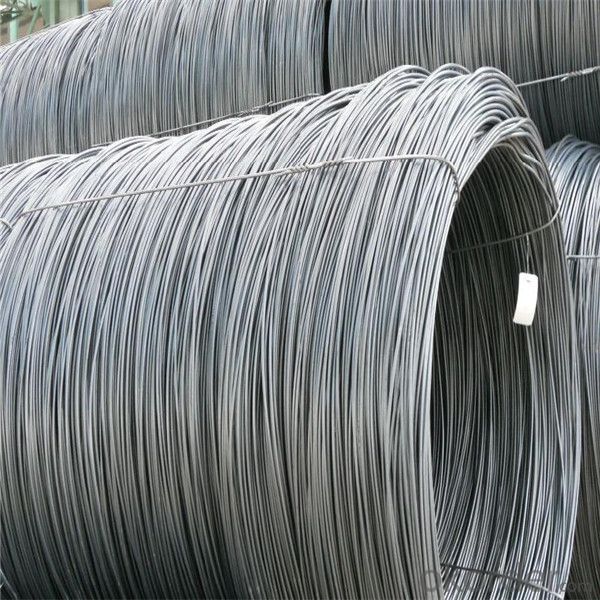
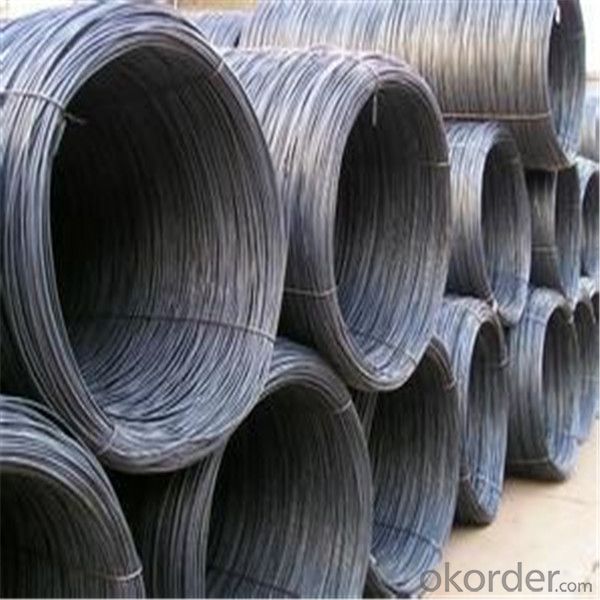
Application :
It generally used in braiding the hose for bathing product and machinery. With it
good flexibility, resistant to high temperature and resistant to corrosion, it
used widely in many industries.
Packing :
Hot-rolled wire rod is held in a unit with at least four steel straps in the
transverse direction and transported and stored without further packaging.
Before
the steel strapping is applied, the wire rod must be sufficiently compressed.
The strapping is fixed in the transverse direction with a single circumferential
strap so that the strapping does not slip and cause the coil to come apart.
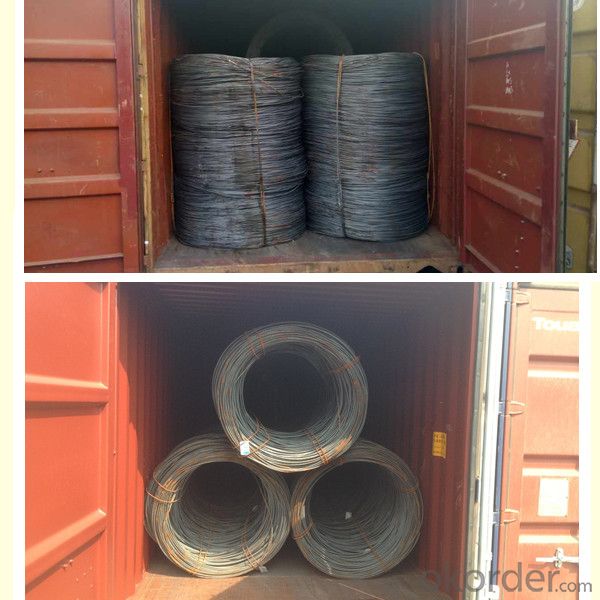

Our service:
(1) We cooperate with famous factories with advanced equipment and well trained workers.
(2) We can provide factory price with trading company service.
(3) We continuously work on the improvement of our processes, guaranteeing
consistently high standards of quality to keep none compensation.
(4) We guarantee 24 hours response and 48 hours solution providing service.
(5) We accept small order quantity before formal cooperation.
(6) We deliver the agreed quality at the agreed time, reacting to changes in
customer wishes in a flexible way.
(7) Due to our volume and selling power, we have excellent freight rates with
shipping lines.
(8) We strive to always be fair and honest in our dealings with customers.
(9) We strive to work together with customers to achieve much more than we can
achieve alone.
(10) Through our passion and commitment we aim to be a market leader in all our
key markets. To maintain our position as market leader we must continue to add
value in all that we do.
FAQ:
1.Q: What's your MOQ(minimum order quantity)?
A: One full container, mixed acceptable .
2. Q: What's your packing methods?
A: Packed in bundle or bulk ..
3. Q: How can I buy CNBM products in my country?
A:Please send us an inquiry or email ,we will reply to you if there is distributor in your country
4. Q: Can we visit your factory?
A: Warmly welcome. Once we have your schedule, we will arrange the
professional sales team to follow up your case.
5. Q: How long does it take to get the product if i place an order?
A:With the process of your requirements,we will pack and deliver in 3
-7 days. If it is by sea shipment,it will take 15-45 days depending on different locations
- Q: How does the chemical composition of steel wire rod affect its properties?
- The chemical composition of steel wire rod greatly affects its properties. The proportions of various elements in the steel, such as carbon, manganese, and phosphorus, determine its strength, ductility, and corrosion resistance. Higher carbon content results in increased strength but reduced ductility. Manganese improves strength and hardness, while phosphorus enhances machinability. Additionally, the presence of impurities can weaken the steel and make it more prone to corrosion. Therefore, controlling the chemical composition of steel wire rod is crucial to achieving desired properties for specific applications.
- Q: How are defects in processed steel wire rod detected and corrected?
- Defects in processed steel wire rod are detected and corrected through a combination of inspection techniques and corrective measures. First, the wire rod is visually inspected for any visible defects such as surface cracks, unevenness, or irregularities. This initial visual inspection helps identify any obvious defects that can be seen with the naked eye. In addition to visual inspection, non-destructive testing methods are employed to detect internal defects that cannot be seen through visual inspection alone. Techniques such as ultrasonic testing, magnetic particle inspection, and eddy current testing are commonly used to identify internal defects like inclusions, voids, or improper internal structure. Once defects are detected, corrective measures are taken to rectify the issues. The specific approach depends on the type and severity of the defect. For surface defects, such as cracks or unevenness, mechanical processes like grinding, polishing, or sanding can be used to remove the defect and restore the smooth surface. In the case of internal defects, various methods can be applied. For example, if inclusions or voids are detected, the wire rod can undergo a process called hot rolling, which involves subjecting the steel to high temperatures and pressure to compress and eliminate the defects. In some cases, the wire rod may need to be completely reprocessed or scrapped if the defects are too severe to be corrected. It is worth mentioning that preventive measures are also crucial in defect detection and correction. Quality control measures are implemented throughout the entire production process to minimize the occurrence of defects. These measures include regular inspections, use of advanced technology, and adherence to strict quality standards. In summary, defects in processed steel wire rod are detected through visual inspection and non-destructive testing techniques. Corrective measures are then implemented, ranging from mechanical processes to reprocessing, depending on the nature and severity of the defect. Additionally, preventive measures are in place to minimize the occurrence of defects from the outset.
- Q: How is steel wire rod used in the production of wire ropes for elevators?
- Steel wire rod is an essential element utilized in the manufacturing of wire ropes utilized in elevators. These wire ropes are carefully designed to ensure strength, durability, and safety. The steel wire rod acts as the primary material for the production of these ropes. Throughout the production procedure, the steel wire rod undergoes multiple stages in order to convert it into wire ropes for elevators. Initially, the rod is thoroughly cleaned and inspected to guarantee its quality. Subsequently, it is heated and passed through a sequence of dies to gradually decrease its diameter. This drawing process aids in enhancing the wire's strength and flexibility. Following the drawing process, the wire is subjected to galvanization to provide protection against corrosion. This involves applying a layer of zinc onto the wire, which effectively prevents rust and corrosion, thereby ensuring the longevity of the wire ropes. Once the wire has been galvanized, it is twisted and braided into strands. These strands are then combined and twisted together to form the final wire rope. The number of strands and the direction of the twist may vary according to the specific requirements of the elevator application. The resultant wire rope, derived from steel wire rod, possesses exceptional strength and flexibility, rendering it suitable for supporting heavy loads and enduring constant movement. It offers stability and safety, enabling elevators to operate reliably and efficiently. In conclusion, steel wire rod plays a crucial role in the production of wire ropes for elevators. Through various processes such as drawing and galvanization, the wire rod is transformed into robust and long-lasting wire ropes capable of withstanding the demanding conditions of elevator operations.
- Q: How is steel wire rod used in the production of cold-formed steel sections?
- Steel wire rod is used in the production of cold-formed steel sections by being fed through a series of rollers and dies, which shape the wire into the desired cross-sectional profile. This process, known as cold forming, allows for the creation of various steel sections, such as channels, angles, and tubes, with precise dimensions and mechanical properties. The use of steel wire rod ensures high strength and durability in the resulting cold-formed steel sections, making them suitable for a wide range of applications in construction, automotive, and manufacturing industries.
- Q: How does the thermal conductivity of steel wire rod vary with different heat treatment processes?
- The thermal conductivity of steel wire rod can vary with different heat treatment processes. Heat treatment processes such as annealing or quenching can affect the microstructure of the steel, leading to changes in its thermal conductivity. Annealing, for example, can result in a more uniform and refined grain structure, increasing the thermal conductivity of the steel wire rod. On the other hand, quenching, which involves rapid cooling, can lead to a harder and more brittle microstructure, potentially decreasing the thermal conductivity. Therefore, the specific heat treatment process employed can have a significant impact on the thermal conductivity of steel wire rod.
- Q: What are the main factors influencing the choice of steel wire rod order payment refund options?
- The main factors influencing the choice of steel wire rod order payment refund options include the terms and conditions of the purchase agreement, the level of trust between the buyer and seller, the reputation and financial stability of the supplier, the ease and cost of implementing different refund options, and the overall market conditions and industry practices.
- Q: How is steel wire rod used in the production of nails?
- Steel wire rod is used in the production of nails as it serves as the primary raw material for manufacturing them. The wire rod is first drawn through a series of dies to reduce its diameter and achieve the desired thickness for the nails. It is then cut into appropriate lengths and shaped into the desired nail forms. The steel wire rod provides the necessary strength and durability required for nails, making it an essential component in their production process.
- Q: What are the different surface protection materials used for steel wire rod?
- There are several different surface protection materials that can be used for steel wire rods. These materials are applied to the surface of the wire rod to protect it from corrosion and other damage. One common surface protection material used for steel wire rods is zinc coating. This involves hot-dip galvanizing the wire rod, which creates a layer of zinc on the surface. Zinc is a highly effective corrosion inhibitor, and it forms a protective barrier between the steel and the surrounding environment. This coating is often used for wire rods that will be exposed to harsh or corrosive conditions. Another surface protection material used for steel wire rods is polymer coating. Polymer coatings can be applied through various methods, such as extrusion or dip coating. These coatings provide a barrier against moisture, chemicals, and abrasion, which helps to prevent corrosion and extend the lifespan of the wire rod. Polymer coatings are often used for wire rods that will be used in indoor or outdoor applications where corrosion resistance is required. Phosphate coating is another surface protection material used for steel wire rods. This process involves immersing the wire rod in a phosphate solution, which creates a thin layer of phosphate on the surface. Phosphate coatings provide enhanced adhesion for subsequent coatings or paints, and they also offer some corrosion resistance. This type of coating is often used as a pre-treatment before applying other surface protection materials. Lastly, epoxy coating is a common surface protection material for steel wire rods. Epoxy coatings are typically applied through a process called electrostatic spray deposition. These coatings provide excellent corrosion resistance, chemical resistance, and durability. Epoxy coatings are often used for wire rods that will be exposed to harsh environments, such as marine or industrial applications. In conclusion, the different surface protection materials used for steel wire rods include zinc coating, polymer coating, phosphate coating, and epoxy coating. Each of these materials offers unique benefits and is selected based on the specific requirements of the wire rod and its intended application.
- Q: What are the main factors influencing the choice of steel wire rod order replacement policy?
- The main factors influencing the choice of steel wire rod order replacement policy include the current inventory levels, demand forecasting accuracy, lead time for procurement, production capacity, and customer requirements. Additionally, factors such as cost considerations, market conditions, and supplier reliability also play a significant role in determining the replacement policy for steel wire rod orders.
- Q: What is the difference between a wire rod and a straight bar?
- Wire rods and bars are generally used in reinforcing bars
Send your message to us
Steel Wire Rod SAE1006 hot rolled low carbon
- Loading Port:
- China main port
- Payment Terms:
- TT OR LC
- Min Order Qty:
- 100 m.t.
- Supply Capability:
- 18592 m.t./month
OKorder Service Pledge
OKorder Financial Service
Similar products
Hot products
Hot Searches
Related keywords
